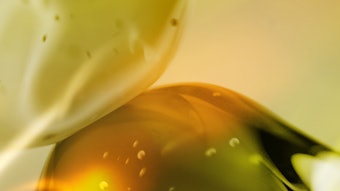The jasmin flower yields one of the most important and exquisite natural oils employed since time immemorial. The warm and highly diffusive odor of the oil is an integral and indispensable component in high quafity perfumery. The old saying “no perfume without jasmin” is not too far from the truth today. Jasmin absolute essence is also used in the formulation of compounded flavors, especially in liqueurs, pastry, condiments and baked goods.
Jasminum grandiflorum L. was first produced commercially in Egypt for the purpose of perfumery at the turn of this century. The name jasmin is derived from the Arabic “Yasmeen.” The flower was apparently native to India and was brought to North Africa and Spain hy the conquering Moors, where it spread to the Mediterranean basin during the 16th century after being introduced to southern France. During that time, the common white flower J. officinale was also introduced to France from Persia.
It was not until the 1860s that large plantations of jasmin for the perfume industry were cultivated. To make the flower more frost resistant and better able to survive conditions other than ideal, J. grandiflorum was grafted on J. officinale. It was later during the early twentieth century that industrial jasmin production moved to Egypt, where the climate was warmer and very suitable for cultivation Other production sites were Italy, Spain, Morocco, Turkey, and Lebanon. For many years southern France owed much of its growth and establishment as a source for natural fragrance materials to the production and extraction of jasmin flowers.










